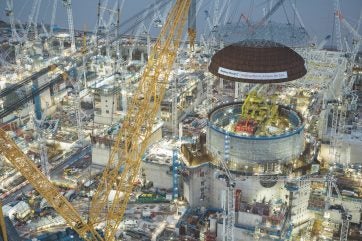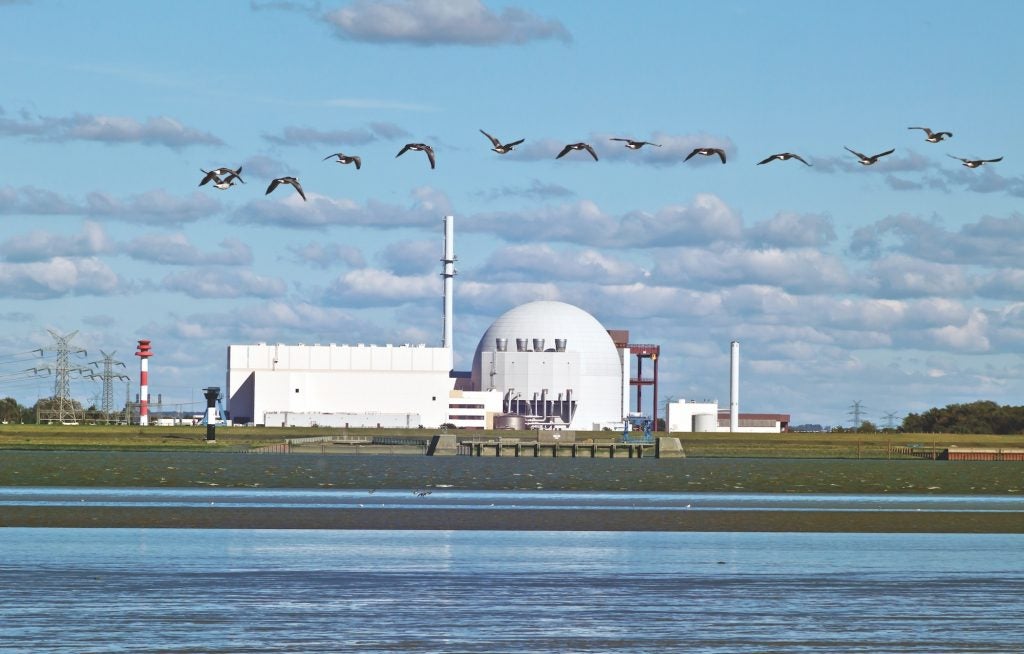
Ever since the Russian invasion of Ukraine in February 2022, European governments have been focused on energy security. In response, the UK government has announced plans for what it describes as the “biggest expansion of nuclear power for 70 years”, with 24 GW of nuclear planned by 2050. France, meanwhile, announced plans to build six new reactors and to consider building a further eight, and has since dedicated efforts towards an investment plan that allocates €1bn towards developing small nuclear reactors. The International Energy Agency (IEA) has estimated that nuclear energy could reduce the need for Russian gas by 4bcm, bioenergy 8 bcm, and coal another 22 bcm. But what exactly does “energy security” mean, and what is nuclear power’s role in achieving it? Will ambitious nuclear plans result in energy security, and if so, when?
Elucidating energy security
Let’s start with a definition. The IEA defines energy security as the “uninterrupted availability of energy sources at an affordable price.” The IEA recognises this definition encompasses both long- and short-term energy security.
According to the Agency, long-term energy security “mainly deals with timely investments to supply energy in line with economic developments and environmental needs.” Short-term energy security is a measure of the grid operator’s ability to react to changes in the supply-demand balance at any point in time. Yet the ambitious nuclear new build programmes across Europe are focused on long-term energy security, and if those ambitions are realised, Europe will be far more energy secure in the long term. In this context, “long term” means decades from now. In the meantime, short-term energy security – balancing supply with demand – will present challenges over the next decade or so.
At any instant in time the energy supplied to the grid must exactly equal the energy demanded from the grid. Energy security therefore doesn’t just mean that there is enough installed energy capacity to meet demand, but also that the amount of energy supplied to the grid can be controlled as supply and demand change relative to one another. This balancing act is performed by the operator of the electrical grid, in the UK that is the National Grid Electricity System Operator (ESO).
Bridging the balancing act
From an energy security standpoint, not every megawatt is created equal. A dispatchable megawatt that is instantly and reliably available is “better” from an energy security standpoint than a megawatt that may or may not be available depending on weather conditions, such as the energy produced by wind and solar. In the UK the ESO’s auction guidelines rate the relative reliability of various energy sources using a “de-rating factor” that correlates to the probability a particular technical class of power source – wind, solar, nuclear, coal, or gas for example – will be available when the ESO needs it. Power plants that can be easily turned on and throttled up or down have the highest de-rating factors, while power sources like solar and wind that are dependent on weather conditions have the lowest. In fact, fossil power plants top the list at a 95% de-rating factor, nuclear is at a respectable 78%, while onshore and offshore wind trail far behind at 8% and 11% respectively. Solar comes in at a little over 3%, making the source virtually useless from a short-term energy security standpoint.
This pretty much means that we can’t achieve energy security with solar and wind alone because the grid operator has very limited ability to react to changes in the supply-demand balance at any point in time. While the ESO can (and does) limit the supply of wind and solar power to the grid during time of over-supply, they can do nothing to increase the supply of energy when the wind stops blowing or the sun isn’t shining. Adding insult to injury, if the ESO requires a wind farm operator in Scotland, for example, to curtail its output due to over-supply causing transmission constraints, they must pay a “constraint payment” to compensate the power producer for the lost opportunity to sell electricity. To date, these constraint payments have totalled about £1bn. In effect, consumers pay some energy producers not to generate electricity in order to achieve a balance between supply and demand.
The ESO has several tools at its disposal to ensure that supply and demand are always balanced. When there is a supply margin of at least 500 MW over forecasted demand, ESO has a relatively easy time balancing supply and demand. This margin gives the ESO the ability to vary supply to meet sudden changes in demand. When the margin dips below 500 MW, the ESO’s computer system will automatically generate a Capacity Market Notice (CMN) four hours ahead of the projected margin shortfall, or an experienced and skilled operator may manually generate an Electricity Margin Notice (EMN). Either of these notices, if issued, puts energy suppliers on notice that they should be ready to supply more power if they can as the demand peak approaches.
Relying on neighbours
If there simply is not enough power available to meet the demand, there is the option of purchasing energy imported from overseas via interconnectors bridging between the UK and the rest of Europe and between nations on the continent. This can get expensive though – in July 2022, during a heat wave that led to particularly high demand, the ESO issued a CMN due to available margin falling below 500 MW. To keep the lights on during this event, the UK was forced to pay Belgium a world-record high price of £9,724.54/MWh, which was about 50 times higher than usual.
If, for whatever reason, there is simply not enough supply to meet demand, then the ESO will be forced to manage the supply and demand balance by limiting demand through issuing a High Risk of Demand Control (HRDR) or Demand Control Imminent (DCI) notification. The next step could be a lowering of voltage on the system, or even temporarily disconnecting some consumers, commonly called “rolling blackouts”.
The bottom line is that if Europe is going to achieve energy security without compromising its climate goals, all paths lead to nuclear. There simply isn’t any other choice. However, the road to energy security is not going to be easy, and many nations will struggle to deliver.
A Europe divided
While many nations are facing potential blackouts and energy insecurity, certain countries in Europe are unwilling to acknowledge the solution nuclear power could offer. Despite the clear advantages in investing in nuclear energy, the EU remains deeply divided in its acceptance of the power source. While in France 57% of the public see nuclear energy as an asset for the country, nations such as Germany have taken decisive action to phase out nuclear power completely. Despite its green rhetoric, Germany is in fact Europe’s largest per-capita emitter of carbon as well as the largest overall emitter of carbon.

While it is deeply concerning that nuclear appears to be in retreat in some parts of Europe, perhaps this setback presents an opportunity for some nations to advance towards a goal of becoming a key international energy exporters. However, there will be challenges.
The UK, for example, currently has five nuclear power stations that are still operating, but four out of five are scheduled to shut down before 2028, taking 4.7 GW of nuclear capacity off the grid. The Hinkley Point C nuclear power plant currently under construction is not expected to come on-line before 2030, but even that giant plant will only add only 3.2 GW, leaving the country with less nuclear (and less capacity margin) in 2030 than it has today. In the meantime, demand is expected to steadily rise. It is therefore likely that there will be times over the next decade or so when demand outstrips supply, forcing ESOs in the UK and elsewhere to implement local power curtailments. In the long term, ambitious nuclear plans, if implemented, will result in energy security, but there is a long way to go. In many nations, like the UK, it’s already too late to prevent the coming energy crisis, but the sooner we build out the nuclear fleet, the sooner we will achieve energy security. Let’s get to work.
Author: Vince Zabielski, Pillsbury Winthrop Shaw Pittman






